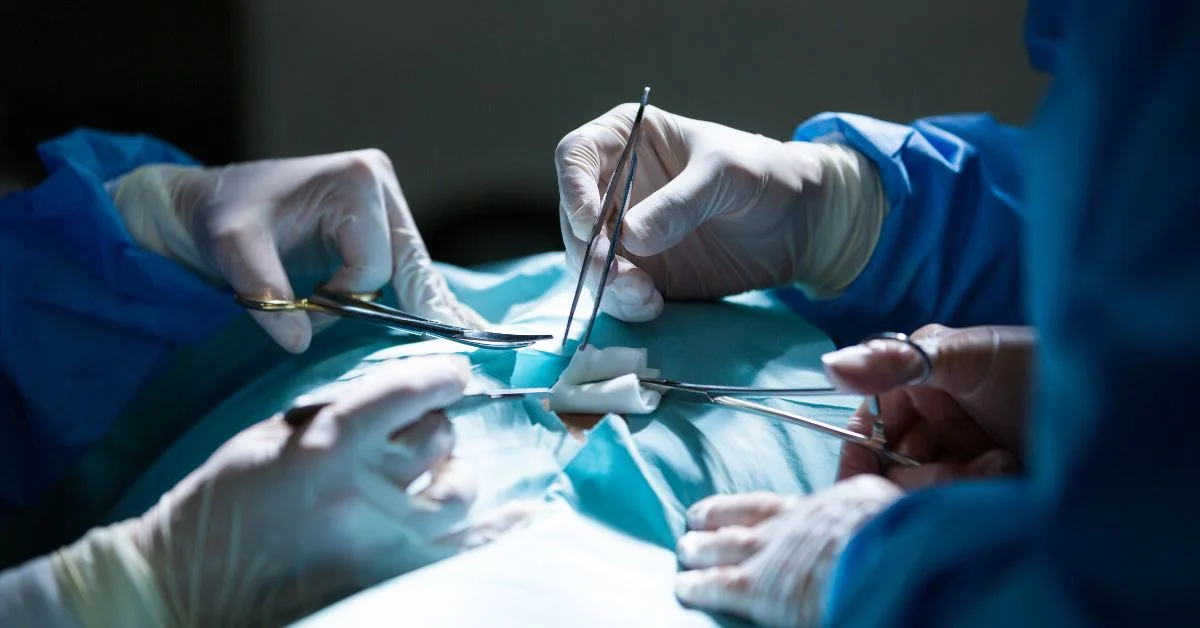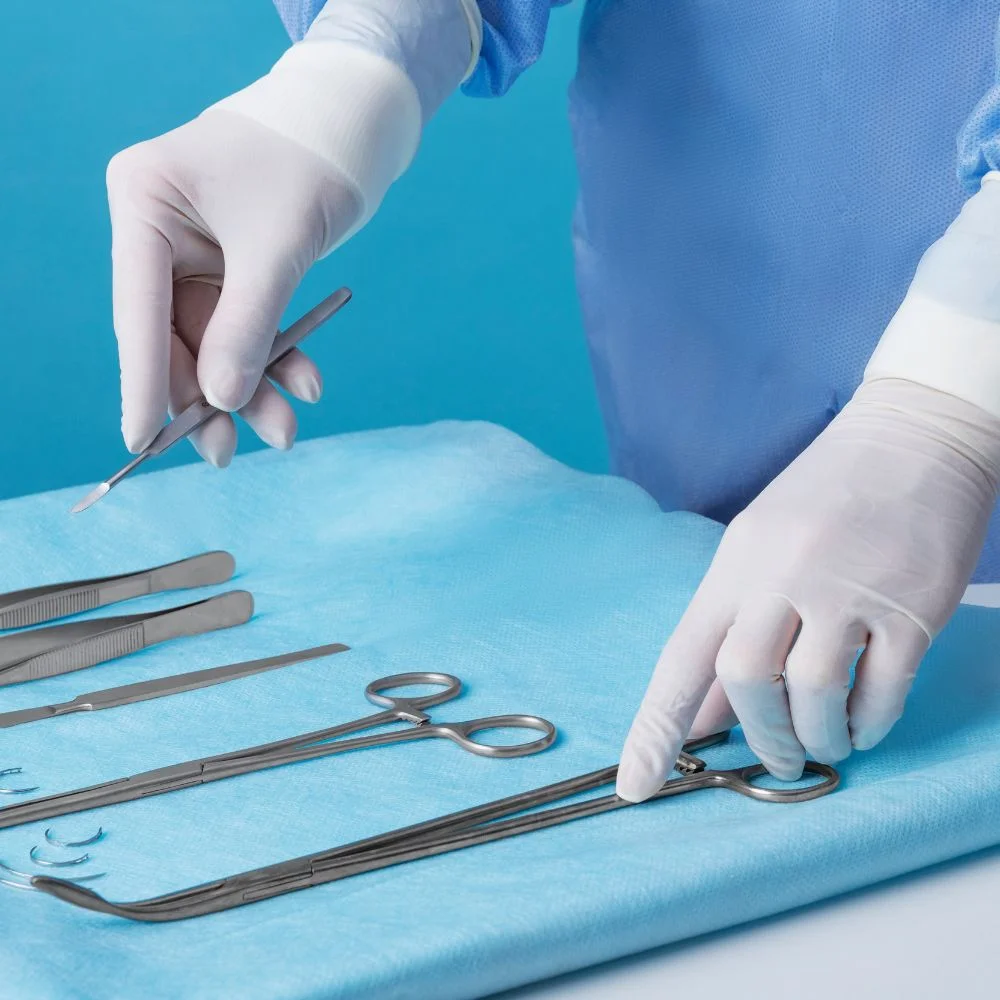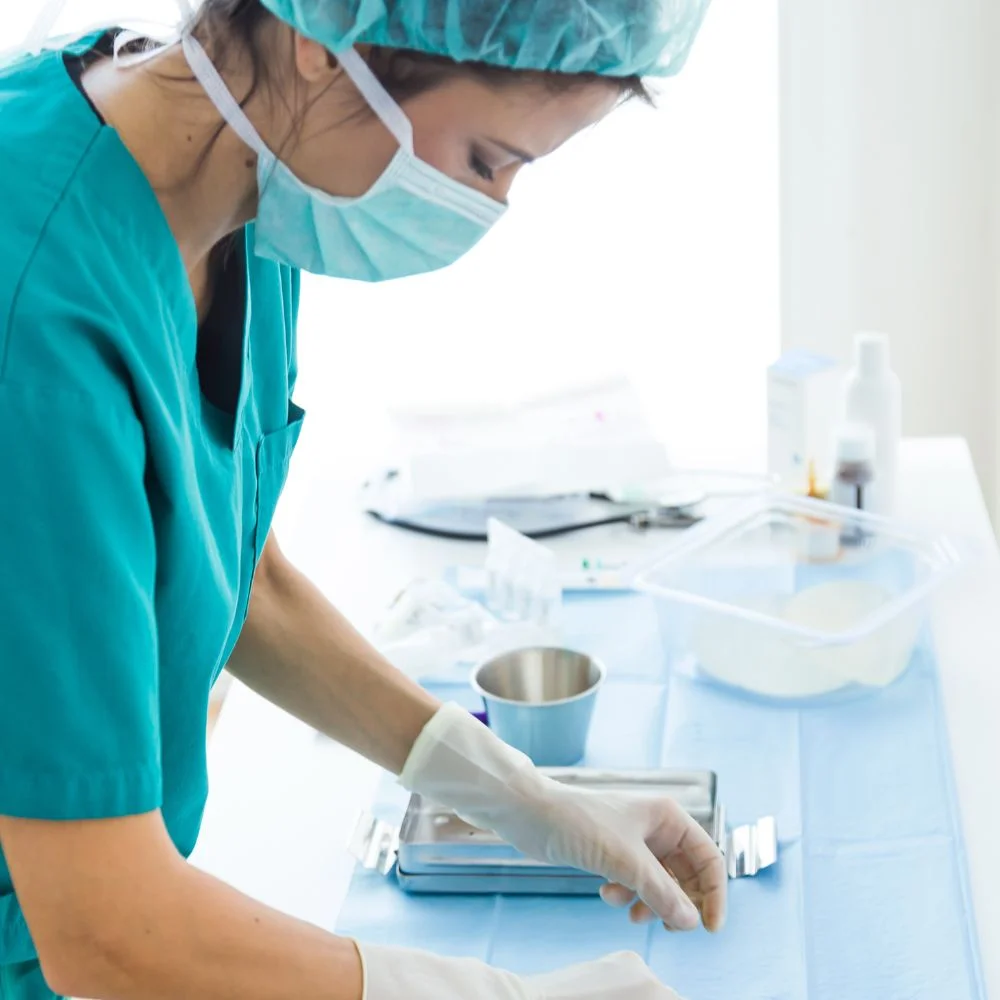Learning about Nahttypen (types of sutures) is essential in understanding how surgeons close wounds, manage healing, and prevent infection. This guide walks you through the core suture materials, common stitching methods, and how surgeons select the right technique based on the wound.
What Are Surgical Nahttypen?
1. Nahttypen are a combination of:
- Suture material(what the thread is made of).
- Suture method(how the thread is applied to the wound).
2. They work together to:
- Close wounds securely.
- Support healing tissues.
- Minimize scars
- Prevent infection
Types of Suture Materials
Suture threads come in many types, each chosen based on tissue type, healing speed, and tension. Here’s how they break down:
1. Absorbable Sutures
These stitches dissolve naturally in the body over time.
- Common materials: Polyglycolic acid (Vicryl), Polydioxanone (PDS), Monocryl.
- Used for: Internal organs, deep layers, fast-healing tissues.
- Duration: Breaks down in 10 days to several weeks.
2. Non-Absorbable Sutures
These sutures must be removed manually after healing.
- Common materials: Nylon, Polypropylene (Prolene), Silk.
- Used for: Skin closure, cardiovascular surgery, orthopedic procedures.
- Duration: Can stay in the body indefinitely unless removed.
3. Monofilament vs. Braided
Monofilament:
- Single smooth strand
- Less infection risk
- Harder to handle and knot
Braided:
- Multiple fibers twisted together
- Easier handling
- May harbor bacteria if not kept clean
4. Natural vs Synthetic Sutures
- Natural: Silk, catgut (more tissue reaction, older method).
- Synthetic: PDS, Vicryl, Nylon (more predictable and stable).
Common Suture Techniques (Nahttechniken)
Choosing the right suturing method ensures proper wound healing and cosmetic results. Each technique serves a purpose based on location, tension, and skin thickness.
1. Simple Interrupted Sutures
- Each stitch is tied and cut separately.
- Provides strong hold, good for infection-prone areas.
- Easy to remove one stitch without disturbing others.
2. Continuous (Running) Sutures
- One long thread runs through the wound with knots at the beginning and end.
- Faster to apply.
- May unravel if the knot loosens.
2. Running Locked Suture
- Same as continuous but with locked loops.
- Offers more tension control and security.
3. Vertical Mattress Suture
- Two-layer closure (deep and surface bite).
- Provides edge eversion (wound lips turn outward).
- Excellent for deep wounds with tension.
4. Horizontal Mattress Suture
- Spreads tension along the wound edge.
- This product is ideal for individuals with fragile or thin skin, such as patients.
5. Subcuticular (Intradermal) Suture
- Placed under the skin surface for cosmetic healing
- No visible external thread.
- Common in facial or plastic surgery.
6. Buried Sutures
- Hidden under the skin, often absorbable.
- Reduces tension on outer sutures.
- No removal needed.
7. Purse string Sutures
- Circular stitches are used to close round wounds.
- Useful in procedures like drain sites or stoma creation.
Choosing the Right Suture
The choice of suture type depends on:
1. Tissue Type
- Skin: Non-absorbable, monofilament (e.g., nylon).
- Muscle/fascia: Absorbable, strong (e.g., PDS).
- Mucosa (mouth, vagina): Fast-absorbing (e.g., Vicryl Rapid).
2. Tension Level
- High tension: Mattress sutures, braided threads.
- Low tension: Simple or subcuticular sutures.
3. Healing Time
- Quick healing: Absorbable.
- Long-term strength needed: Non-absorbable.
Tools Used in Suturing
1. Needle Types
- Cutting needle: Sharp tip for tough tissues like skin.
- Reverse-cutting: Reduces the risk of cutting through delicate tissue.
- Taper-point needle: Used in soft tissue (e.g., intestines).
2. Suturing Instruments
- Needle holders (for precise control).
- Tissue forceps (to lift the wound).
- Scissors (to trim sutures).
3. Knot Techniques
- Square Knot: Secure and easy.
- Surgeon’s Knot: Extra loop to prevent slipping.
- Aberdeen Knot: Used in continuous sutures for a smooth finish.
Post Suture Wound Care
1. Cleaning & Protection
- Keep dry for the first 24–48 hours.
- Use clean gauze and antiseptic ointments.
- Avoid soaking or scrubbing.
Common Suturing Mistakes
1. Errors to Avoid
- Tying too tightly (can cause tissue necrosis).
- Using an inappropriate needle size.
- Leaving gaps (may lead to wound reopening).
- Using too many or too few sutures.
2. Complications
- Infection
- Scarring
- Dehiscence (wound reopening).
- Stitch abscess.
Advanced Suture Technologies
1. Barbed Sutures
- No knotting required.
- Quicker to apply.
- Ideal for laparoscopic and cosmetic procedures.
2. Tissue Adhesives
- Glue-like closure for small, clean cuts.
- Used for children or low-tension wounds.
3. Staples
- Metallic clips are used in surgery.
- Fast and effective for the scalp, abdomen.
- Requires a special tool for removal.
Summary of Nahttypen Selection
1. Quick Recap
- Use absorbable for internal/deep layers.
- Use non-absorbable for external or long-healing wounds.
- Interrupted sutures offer safety and control.
- Running sutures are fast for long wounds.
- Mattress techniques manage tension and aid proper healing.
- Always consider tissue type, tension, and healing speed.
Who Should Know This?
This guide is helpful for:
- Medical students: learning surgical basics.
- Nurses and assistants: assisting with wound closure.
- Patients: curious about their surgical care.
- Young doctors: preparing for exams or clinicals.
What Are Nahttypen?
1. Nahttypen means “suture types” in surgery. It covers two things:
- Suture materials: the thread used (absorbable, non-absorbable, monofilament, braided).
- Suture techniques: how the thread is placed (simple, mattress, running).
Suture Materials
1. Absorbable vs Non-absorbable
- Absorbable sutures: (e.g., Monocryl, PDS, Vicryl): dissolved by the body, great for deep tissue or internal wounds.
- Non-absorbable sutures: (e.g., Nylon, Prolene, Silk): stay unless removed, ideal for skin, fascia, blood vessels.
2. Monofilament vs Braided
- Monofilament: single strand; smooth, low infection risk, but harder to knot. (e.g. Nylon, PDS, Prolene) .
- Braided (multifilament): multiple fibers; easier to handle, good knot security, but higher infection risk. (e.g. Silk, Vicryl) .
3. Natural vs Synthetic
- Natural(e.g., Silk, Catgut): more tissue reaction; less common now.
- Synthetic(e.g., PDS, Vicryl, Polypropylene): predictable strength, fewer reactions.
4. Other Considerations
- Tensile strength: important for holding tissues like fascia or tendons.
- Elasticity: allows for swelling, edema.
- Tissue reaction: lower is better to minimize inflammation.
Suture Techniques (Key Nahttypen)
Here are the most common suturing methods, simple, clear, and with no unnecessary breaks:
- Simple interrupted suture: individual stitches, cut after knot. Strong, safe if one breaks, others hold.
- Simple running (continuous) suture: one thread for multiple stitches, tied at the endfast and even tension.
- Running locked suture: continuous with locks like baseball stitchextra tight and secure.
- Vertical mattress suture: deep and superficial bites; everts edges; good for high tension wounds.
- Horizontal mattress suture: lateral tension distribution; great for fragile edges.
- Half-buried mattress sutures: vertical or horizontal variants to reduce surface marks.
- Pulley & far near near far sutures: advanced tension redirecting techniques.
- Running subcuticular suture: hidden, cosmetic; no separate knots visible.
- Buried sutures (dermal subdermal): deep supportive stitches under skin for closure and tension release.
- Purse string suture: circular drawstring closure, often used for stoma or drains.
- Stay sutures: temporary hold stitches during procedures; removed at the end.
- Barbed sutures: no knots needed; barbs lock tissuespeedy but careful use required.
Needle Types & Technique
1. Needles come in:
- Cutting: triangular edges; good for tough tissue.
- Reverse cutting: tougher tissue, less risk of cutting through.
- Taper point (round body): pushes through soft tissue; ideal for fascia.
2. Grip and knotting:
- Hold the needle holder with a palm grip for better control.
- Common knot: square knottwo throws one way, then two more the opposite way .
Wound Care & Suture Removal
- Absorbable sutures: dissolve naturally and are removed.
- Non-absorbable sutures: removed based on location.
- Face: 3–5 days
- Scalp/arms: 7–10 days
- Torso/legs: 10–14 days.
- Keep sutures clean, dry, and undisturbed.
Watch for signs of infection (redness, tenderness, discharge) and call a doctor if they appear.
Common Issues & How to Avoid Them
- Cheesewiring: thread cutting through tissue under tension; avoid over-tight knots.
- Edge inversion or eversion: improper stitch technique can lead to cosmetic defects.
- Infection: Braided or high-tension stitches increase risk. Choose monofilament, and ensure cleanliness.
New & Alternative Options
- Barbed sutures: reduce suturing time, no knots; best in laparoscopy/cosmetics.
- Tissue adhesives (cyanoacrylate glues): quick closure with no stitches, mostly for clean, low-stress areas.
Staples: fast, less inflammation, used for scalp, large wounds; require staple removal .
Summary & Best Practices
- Always consider wound type, healing needs, and cosmetic goals.
- Match materials (absorbable vs non-absorbable; mono vs braided) to tissue and risk.
- Choose techniques (interrupted, mattress, running, buried) based on tension and visibility.
- Use proper needle and knot technique to reduce tissue damage.
- Monitor healing, remove sutures on time, and prevent infection.
Conclusion:
Understanding Key Nahttypen in surgical techniques empowers you, whether you’re a medical student, professional, or patient, to appreciate how surgeons close wounds effectively. You now know what materials they choose, which technique suits different needs, and how proper care helps wounds heal well. If you have more questions, feel free to ask!





